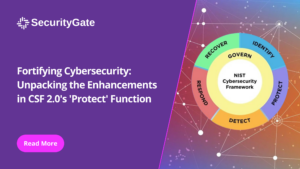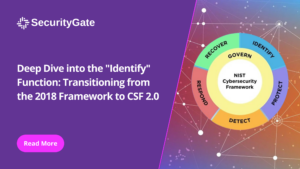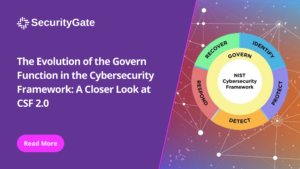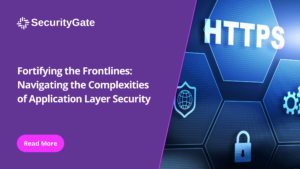The success and efficiency of any cybersecurity program depend primarily on how far people can see the difference between what situation they are in and what situation they think they are in. The Critical Infrastructure Maturity Model (CIMM) touches upon this critical issue.
As someone has rightly said, “Either you know you’ve been hacked, or you’ve been hacked, and you don’t know you’ve been hacked.”
An organization can have an excellent cybersecurity framework in place and safely assume that it will keep the organization’s security posture intact. Many factors are considered, such as unique threats the enterprise faces, the environment it operates in, people it deals with, etc., while designing and implementing a cybersecurity framework. Different priorities of the people, their individual experiences, and perceptions are also involved in the design. However, if these factors are not well-aligned with organizational objectives, the risks of cyberattacks can not be ruled out.
Generally, all business entities assume that they have ‘updated’ cybersecurity programs or frameworks in place to manage the myriad risks present in the IT environment today. There is an abundance of cybersecurity frameworks that focuses on regulatory compliance, organizational maturity, etc. However, it is often seen that they still regularly expose themselves to tremendous cyber risks.
The Challenges of Running a Cybersecurity Program for Critical Infrastructure
Amongst the various challenges that cybersecurity programs face, the biggest one to overcome is people. One has to admit that employees keep on changing during the lifespan of a business. Every employee contributes as per his/her mindset about cybersecurity. When it is followed blindly for a period without taking into account the changing scenarios, it can give rise to contradictions or misunderstandings with the core essentials of cybersecurity programs that are expected to be in place in the organization’s network. This lack of understanding creates a knowledge or perception gap between the existing program’s ideology and what the status quo demands.
The experience levels of the people handling these cybersecurity programs are a critical aspect of its success. Many business entities have experienced people to manage cybersecurity risks, but some industries lack the skill to do so. It becomes a tougher challenge to overcome if diverse teams adopt cybersecurity software used by their predecessors without much thought or lack proper communication between different departments connected to the industry, thereby leading to wastage of resources, overworked teams, and issues that stifle the overall progress of the business.
Any cybersecurity program consists of four stages. However, it is generally observed that enterprises overlook certain stages.
- A program matures through each stage, beginning with Preparation, then Baseline, Acceleration, and lastly Incorporation.
- When the foundation pillars of the program are laid for determining its long-term success, the industry is in the Preparation stage of the cycle.
- However, the businesses tend to think that they have reached the Incorporation stage, as they connect the feedback from every stakeholder.
- Thus, one can see that the industry bypassed two crucial steps, i.e., Baseline and Acceleration.
This difference in perception constitutes the gap mentioned before, and it must be addressed.
The Solution – Critical Infrastructure Maturity Model (CIMM) Assessment
We’ve been working on developing a solution to address the challenges of running a cyber program, namely the overestimation of maturity that many businesses mistakenly make.
- This solution comprises of 17 pertinent questions that can rapidly assess and validate an organization’s cybersecurity program state.
- It equips OT, and IT risk stakeholders to manage the phenomenon across both their technical and non-technical teams.
- It can efficiently bring about disillusionment in the stakeholders regarding what situation they think they are in so that they get clarity of vision to see the actual status quo of things around them.
- It can thus finally erect the right kind of foundational pillars of a cyber program determined for long-term success.
Final Words
When businesses do not implement their cybersecurity programs diligently, cyberattacks become common. The exposure to cyber threats despite advanced security solutions in place is baffling to many. The often overlooked factor is correctly assessing maturity in the first place, which is essential for managing the risks attached to cyberattacks. Every organization should reassess its methodology and understand the 17 critical components of a functional cybersecurity program, as suggested by SecurityGate.io’s CIMM assessment that will help them fine-tune the balance among people, processes, and technology.






